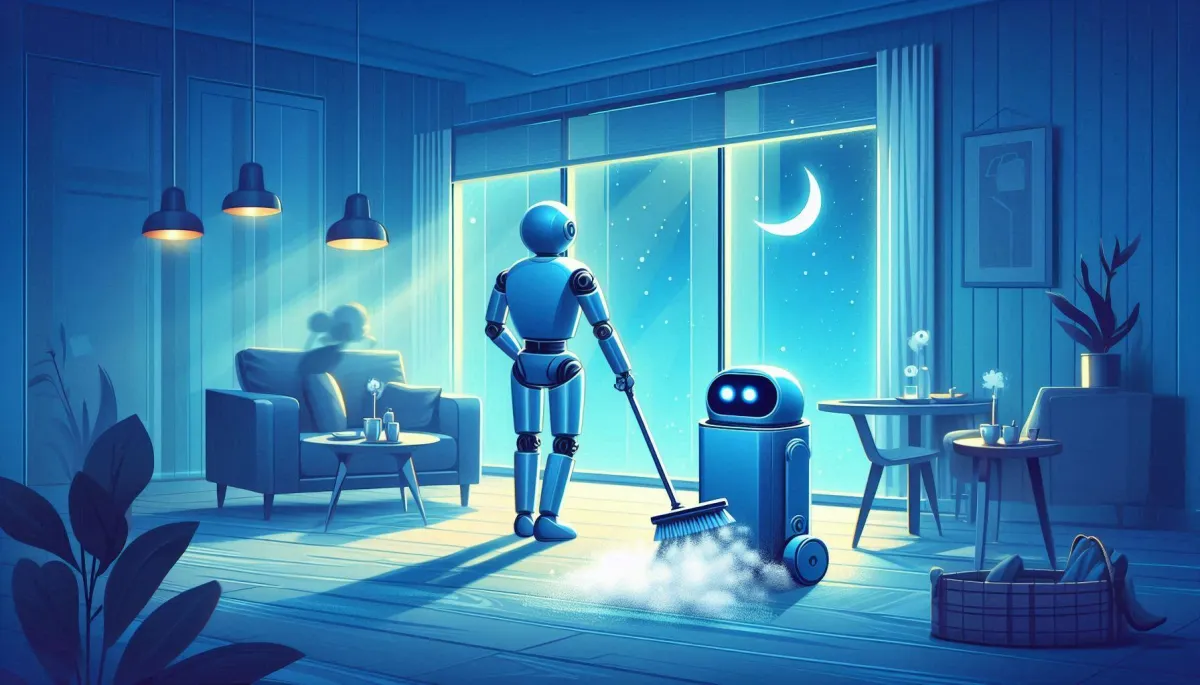
Window Cleaning Robots: Are They Worth It?
Window cleaning robots promise automated, hands-off sparkling windows, but are they really a smart investment for your home or business? In this article, we explore the pros and cons of robotic window cleaners like the Ecovacs Winbot W1 Pro and Hobot 2S, compare them to traditional methods, dive into key features like motorized suction and smart navigation, and discuss real-world challenges such as battery life, corner cleaning issues, and maintenance. We'll also explain when hiring a professional window cleaning expert might still be the best solution.
The Rise of Window Cleaning Robots
The task of cleaning windows has long been a tedious and sometimes hazardous job, especially for second-story or hard-to-reach panes. In the quest for convenience, the window cleaning robot has emerged, offering a new way to automate this chore. Popular models like the Ecovacs Winbot W2 Omni and Hobot 2S promise to stick to your glass using motorized suction, glide methodically across the surface, and leave it streak-free with minimal human involvement.
But how does the promise of automated cleaning stack up against reality?
Why People Are Turning to Robotic Window Cleaners
Several trends have fueled the demand for robotic window cleaners:
Smart Home Integration: More homes are becoming interconnected with devices that automate daily chores.
Safety Concerns: High windows pose real risks for DIY cleaners.
Time Savings: Automated cleaning reduces manual labor, freeing up time for other tasks.
At Pivotal Window Cleaning, we’ve seen growing interest from homeowners and businesses wanting an easier, safer way to maintain spotless glass, but the reality isn't always as shiny as the marketing suggests.
"Automation in cleaning is appealing, but even the best robotic systems require occasional human backup."
How Window Cleaning Robots Work
Most robotic window cleaners work by combining a motorized suction system to adhere firmly to the glass and a microfiber pad that scrubs away dirt as the robot moves. Advanced models also integrate smart navigation technology to optimize their cleaning paths, avoiding unnecessary overlaps and covering maximum square footage within one battery cycle.
Typical components include:
A portable station (or charging dock)
Safety rope to prevent falls
Water or cleaning solution tanks with a spraying mechanism
Remote control via an app for manual steering or programming
Built-in alerts for device notifications and maintenance prompts
Still, even with these technological advances, a few key issues remain.
Real Challenges Robotic Cleaners Face
Despite all the bells and whistles, robotic window cleaners are not without their limitations. Most notably:
Gravity Challenges: Maintaining consistent suction on vertical surfaces is a tricky engineering feat.
Edge and Corner Cleaning Issues: Many robots struggle to reach window edges, requiring manual touch-ups.
Noise Level During Operation: Some units emit a constant hum that can be disruptive, especially in quiet environments.
Battery Life: While some models like the Winbot W2 Omni boast 110 minutes of runtime, covering around 592 sq ft, cleaning larger properties might still require multiple charges.
Moreover, dirty or multi-pane windows can further complicate the process. In heavily divided windows, you'll often find yourself repositioning the robot multiple times — hardly the "set it and forget it" experience people hope for.
If you're looking for a stress-free window cleaning solution in the UK, our local teams can provide safer, faster alternatives without the headache of dealing with robot hiccups.
Comparing Popular Robotic Window Cleaners
When evaluating the value of a robotic window cleaner, it's essential to look closely at different models available in the market. Three standouts are often discussed:
1. Ecovacs Winbot W1 Pro and W2 Omni
Ecovacs has been a leader in smart home device innovation, and their Winbot series shows why. The Winbot W1 Pro and the newer Winbot W2 Omni combine smart navigation technology, an easy-to-carry portable station, and effective spraying mechanisms that spread cleaning fluid evenly across the surface.
Pros:
Outstanding cleaning coverage
Good battery life (up to 110 minutes)
Strong motorized suction power
Cons:
Struggles slightly on textured glass
Higher price compared to simpler models
For many homeowners, the Winbot W2 Omni transforms window cleaning into something almost entertaining. There's genuine entertainment value in watching the robot tackle smudged glass with methodical precision.
2. Hobot 2S
The Hobot 2S is another top contender, excelling with its dual water spray system. This window cleaning robot is particularly good at leaving behind a streak-free cleaning finish, even on very dirty windows.
Pros:
Effective spraying and wiping in one pass
Handles large, flat surfaces very well
Cons:
Not as efficient on multi-pane or curved windows
Needs regular attention to keep microfiber pads clean
For homes with simple, large windows, Hobot 2S might be one of the most efficient alternatives to manual cleaning.
3. Rozie 1200
A newer player, the Rozie 1200, emphasizes ease of setup and use. It’s ideal for people seeking minimal fuss and offers reliable performance with a simple app-based remote control.
Pros:
User-friendly app and controls
Decent performance at a mid-range cost
Cons:
Shorter battery life compared to Winbot
Less effective on particularly grimy surfaces
Cost vs Value: Are Robots Worth the Investment?
Price plays a huge role when evaluating whether a robotic cleaner makes sense. With models ranging from £300 to over £600, the question becomes one of value for money.
Factors to weigh:
Initial Cost: A robotic window cleaner can cost as much as three or four traditional professional cleanings.
Maintenance Costs: Pads need replacing, batteries wear down, and some robots require specific cleaning solutions that add to long-term expenses.
Durability: The risk of breakdown is real, and repairs aren’t cheap — another factor favouring human window cleaners.
Effectiveness: Despite clever engineering, robots still need occasional human intervention, especially for tough dirt, edges, or second-story windows.
"Window cleaning robots offer convenience, but at a price. For large properties or heavily divided windows, professional services may still be the smarter investment."
For many UK homeowners, especially those with complex or older window designs, working with experienced window cleaning specialists provides superior results without the hefty upfront robot investment.
Hidden Limitations You Should Know
No matter how high-tech they get, window cleaning robots still face certain unavoidable obstacles:
Gravity challenges and potential suction failures
Difficulty cleaning multi-pane window designs
Risk of robots slipping, even with a safety cable attached
Limited compatibility with certain cleaning fluids — using the wrong one might damage sensitive internal parts
Noise levels that could be distracting, especially in residential settings
Dependency on frequent pad maintenance to avoid smearing dirt instead of cleaning
While robots are marvels of engineering, expecting them to deliver a completely hands-off solution is still unrealistic for most homeowners today.
Final Thoughts: Should You Invest in a Window Cleaning Robot?
If you love technology, live in a modern home with mostly large, flat glass surfaces, and don't mind occasional manual intervention, a robotic window cleaner like the Ecovacs Winbot W2 Omni could feel revolutionary. The combination of smart navigation, reliable motorized suction, and surprisingly satisfying results can make it seem like the future of automated cleaning has finally arrived.
However, for many homeowners — especially those dealing with multi-pane setups, hard-to-reach windows, or older, textured glass — the practical benefits can be underwhelming. Manual intervention is still required more often than most people expect.
Before making your decision, consider:
The complexity of your windows
Your tolerance for ongoing maintenance (pad cleaning, firmware updates, safety cable checks)
How much time you want to invest vs. how much you expect to save
The importance of guaranteed, perfect results
If you value absolute convenience, streak-free clarity, and guaranteed professional results, it might be far simpler — and often more cost-effective — to request a quote from seasoned window cleaners like us.
When a Professional Window Cleaning Service is the Smarter Choice
At Pivotal Window Cleaning, we know how much frustration dirty windows can cause. While a window cleaning robot is a fascinating gadget, it can't yet fully replace the expertise and reliability of human hands.
Why professional cleaning wins out:
We handle second-story windows and awkward angles safely.
We leave no missed corners or half-cleaned edges.
We deal with the most stubborn marks without damaging your glass.
We offer service across a wide range of locations throughout the UK.
There’s also the peace of mind that comes from knowing you won’t have to troubleshoot battery alerts, deal with a bot dangling from a broken safety rope, or listen to constant operating noise while trying to relax at home.
Conclusion
In short, the answer to "Window Cleaning Robots: Are They Worth It?" is: sometimes — but not for everyone.
A high-end window cleaning robot can be a fun, futuristic way to take the edge off of window maintenance. They are ideal for tech-savvy homeowners with simple window setups looking to dip into smart home device innovation. However, for consistently pristine results, complex windows, and a completely hands-off experience, professional window cleaning remains the gold standard.
Before spending hundreds on the latest gadget, weigh your needs carefully. And remember: clean, gleaming windows are only a few clicks away — with none of the hassle — when you partner with true cleaning professionals.
Frequently Asked Questions About Window Cleaning Robots
1. How long does it take for a window cleaning robot to clean one window?
Most window cleaning robots can clean a standard window (around 2–4 sq meters) in 5 to 10 minutes, depending on the level of dirt, window size, and the robot's cleaning speed.
2. Do window cleaning robots work on both sides of the window?
Yes, but you have to manually move the robot to clean both the interior and exterior sides. Most devices only clean the side they're attached to at any one time.
3. Can window cleaning robots be used on frameless glass?
Some advanced models are designed to handle frameless glass using edge detection sensors, but lower-end models may struggle without physical window frames as a guide.
4. Are robotic window cleaners safe for use on tinted windows?
In general, they are safe, but it's crucial to check the manufacturer's specifications. Strong motorized suction or certain cleaning solutions may risk damaging delicate films if not compatible.
5. How often do I need to clean or replace the microfiber pads?
After every full use, microfiber pads should be cleaned thoroughly to prevent dirt buildup. Pads usually last for 20–30 cleaning sessions before needing replacement, depending on the quality and usage conditions.
6. Can these robots clean windows with heavy grime or sticky residue?
Window cleaning robots are designed for regular maintenance cleaning, not deep-cleaning heavily soiled glass. Heavy dirt often requires a manual pre-wipe for best robotic performance.
7. What happens if the battery dies while the robot is cleaning?
Good models are equipped with safety ropes and will alert you via app or onboard notification before running out of power. However, if battery management is poor or ignored, the robot could lose suction and fall.
8. Do robots leave streaks on the window?
While marketed for streak-free cleaning, results vary. Dirty microfiber pads, insufficient cleaning fluid, or poor robot maintenance can result in minor streaking, particularly on sun-exposed windows.
9. How much weight can the motorized suction handle?
Most window cleaning robots have suction strong enough to support 3 to 5 kilograms, allowing them to cling securely to smooth, vertical surfaces even outdoors in moderate wind conditions.
10. Is a robotic window cleaner a good choice for business premises?
It depends. For large office buildings, storefronts, or high-rise glass, robots are not practical replacements for professional services. However, for small businesses with limited glass surfaces, they can supplement professional cleaning between scheduled visits.
